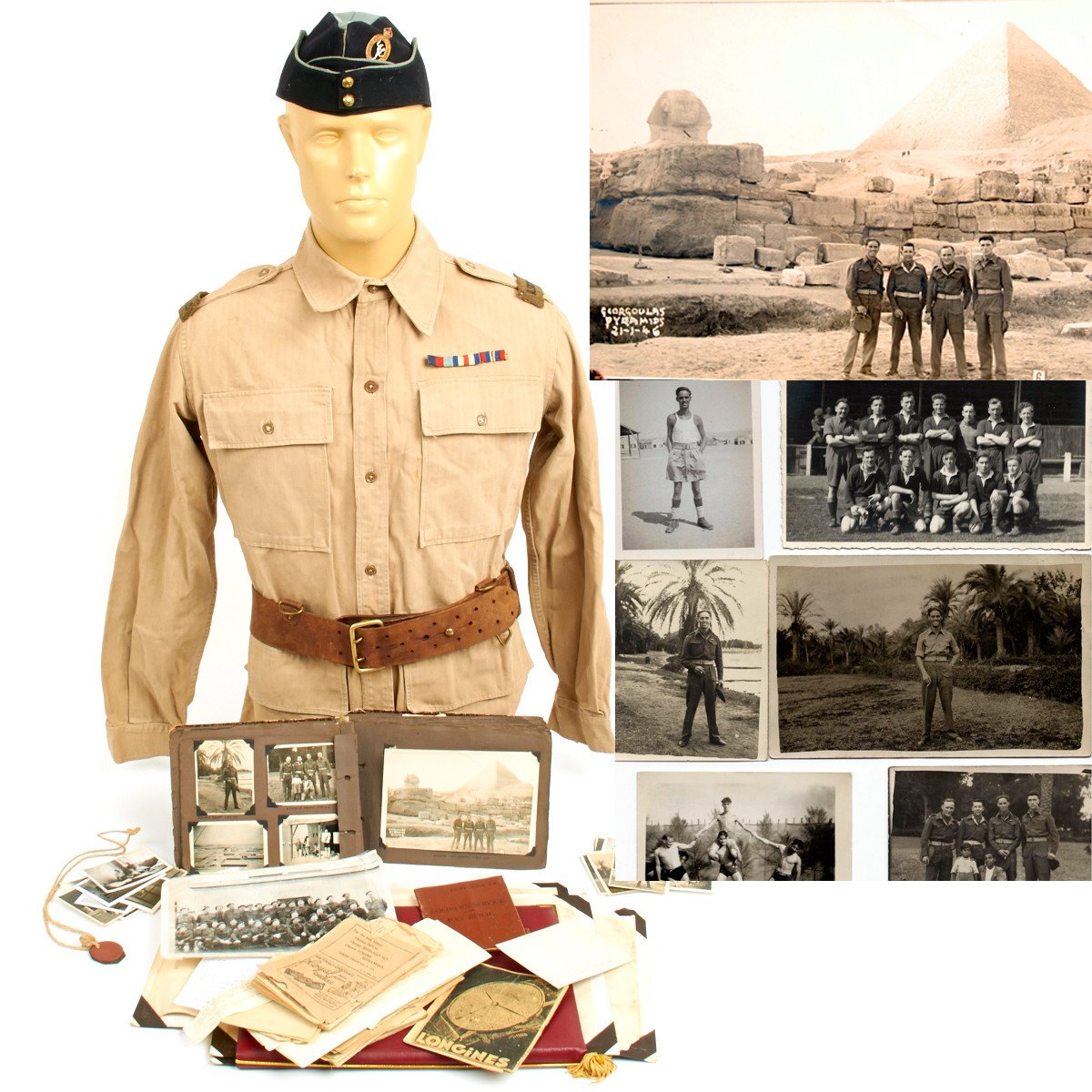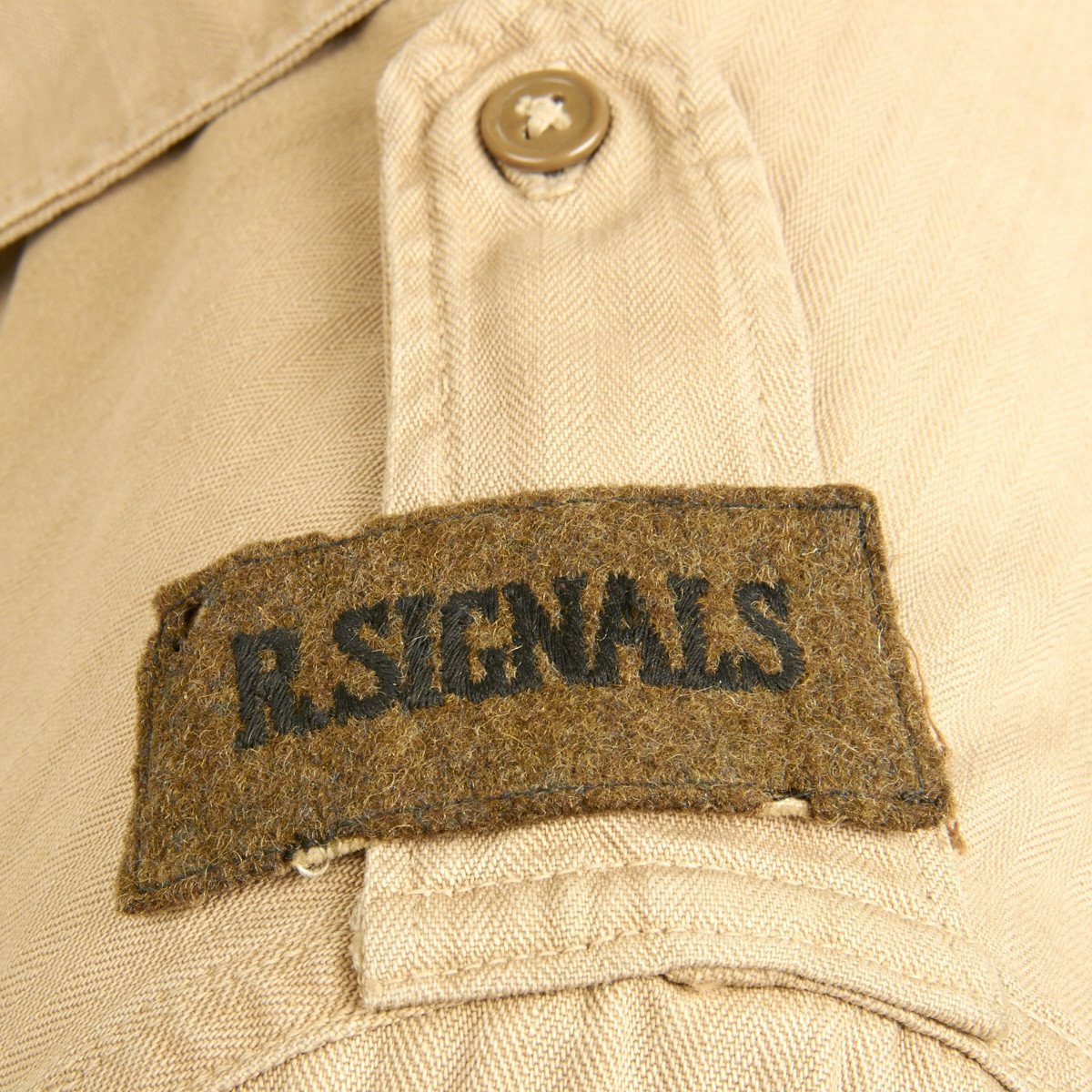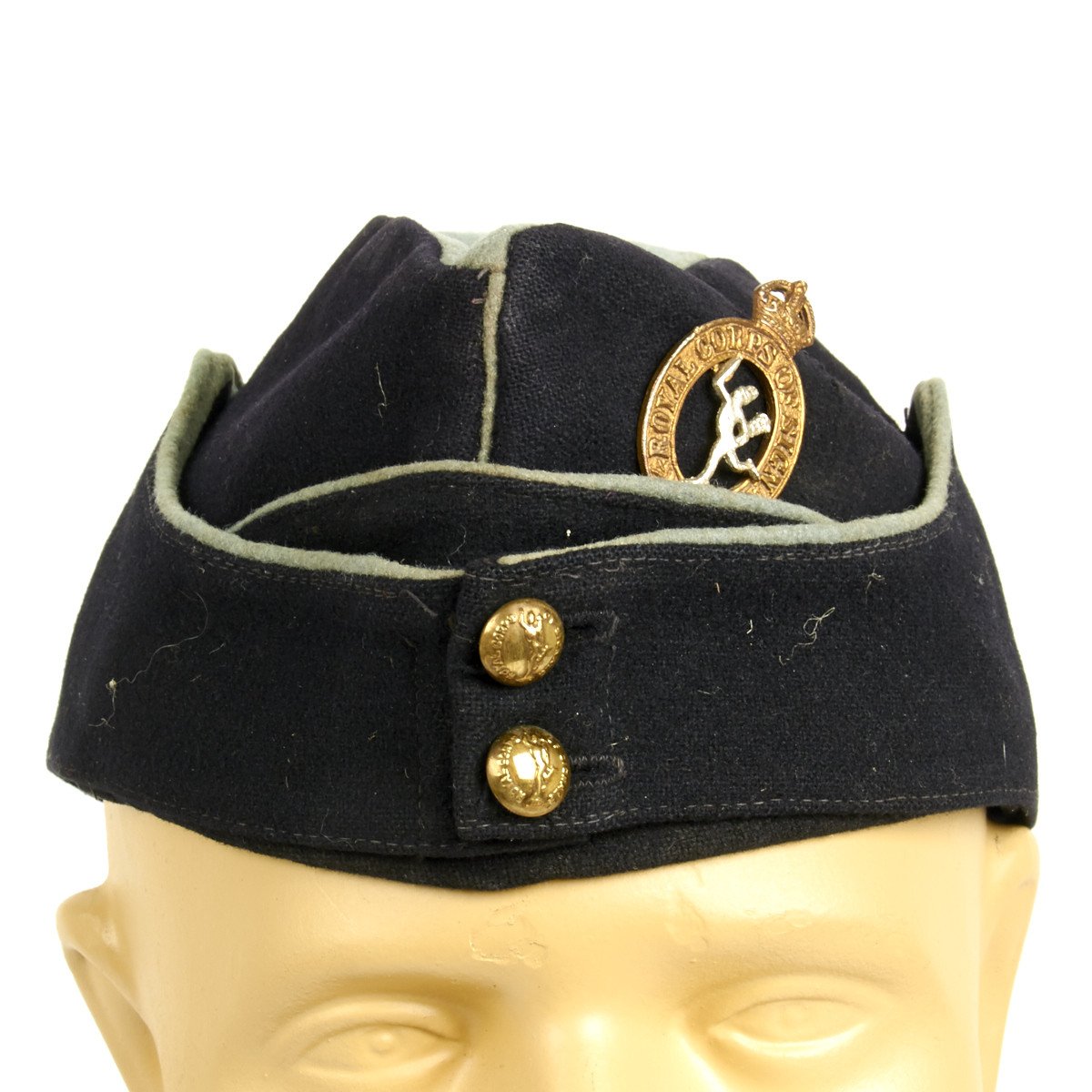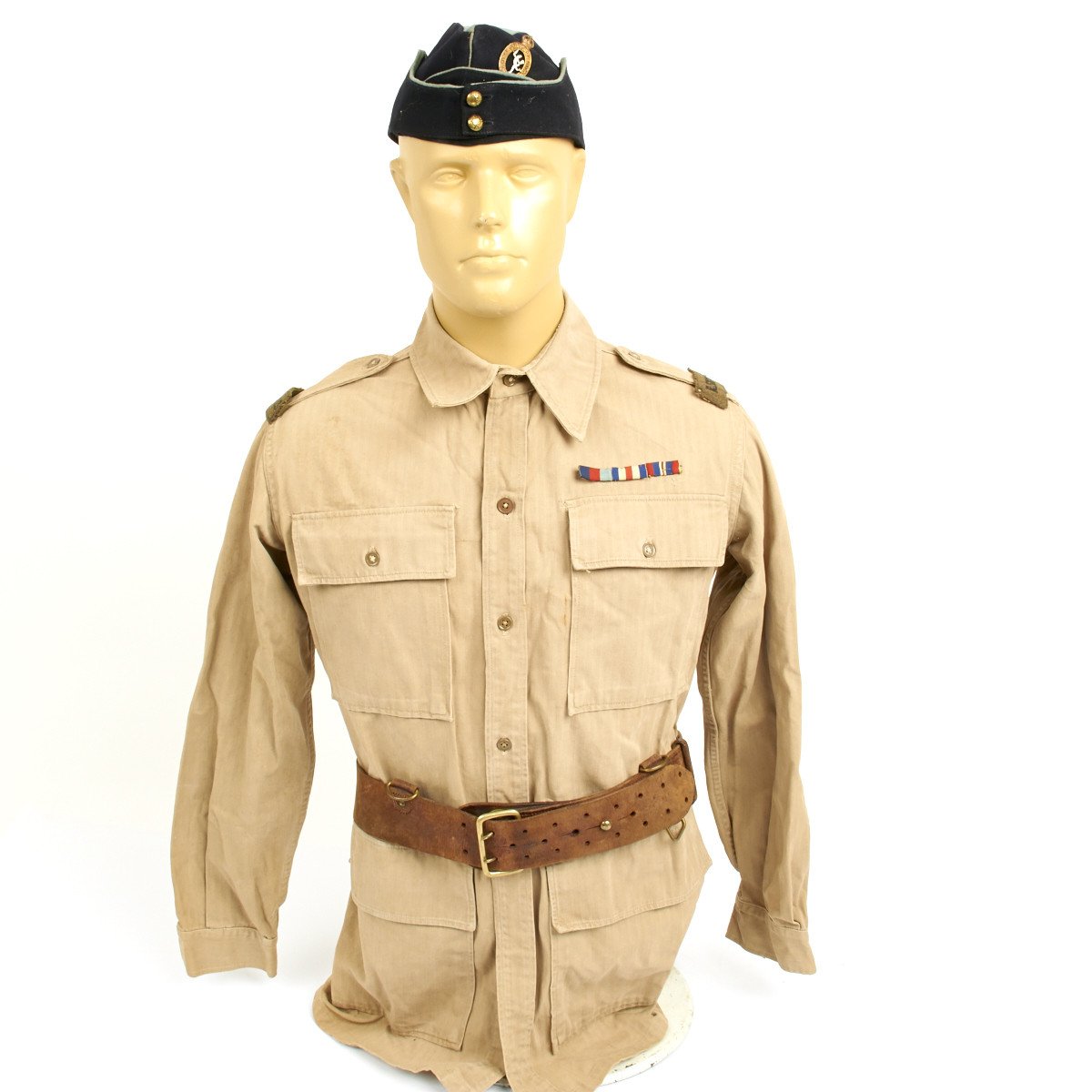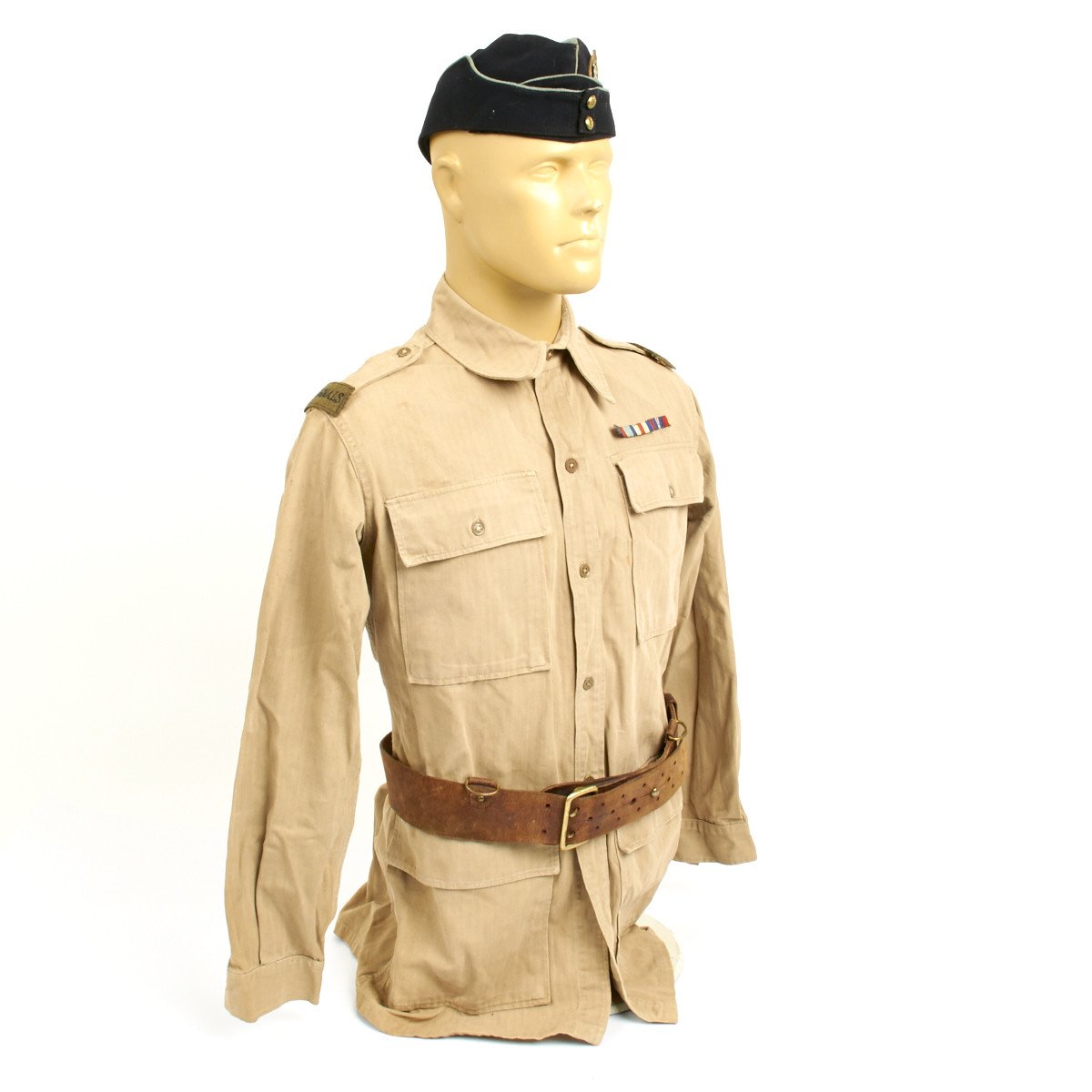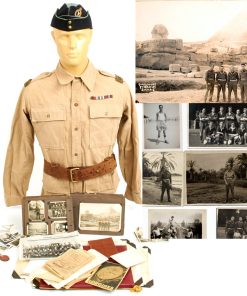Original British WWII Named North Africa Campaign Eighth Army Grouping Original Items
$ 495,00 $ 148,50
Original Items: One-of-a-kind grouping. This set belonged to Robert Ward a member of the Royal Signal Corps, who served in the British army from 1939-1946. The set consists of the following:
Tropical shirt with medal ribbons and signal corps epaulet flashes.
Leather and composite dog tags that read: WARD R CE 14651546
Blue wool overseas side cap with cap badge that reads ROYAL CORPS OF SIGNALS.
Leather Sam Browne Belt.
Photo album with more than 90 photos (many loose) and news print all with captions and locations that include places such as Cairo, Alexandria, etc.
Envelope full of original photo negatives marked Egypt 46
Loads of wartime notes, letters, memo, pay stubs etc.
Service records
Sketch book named to Rober D Ward with three sketches- named as such German POW – Life, Native – Portrait, Native – Life.
This is a wonderful collection of one mans journey through North Africa. The Eighth Army was formed from the Western Desert Force in September 1941 and put under the command of Lieutenant-General Sir Alan Cunningham. It gained its number from the fact that the French Army had fielded seven field armies previously in the same war, whereas the British had fielded the British Expeditionary Force.
At its creation, the Eighth Army comprised two Corps: XXX Corps under Lieutenant-General Willoughby Norrie and XIII Corps under Lieutenant-General Reade Godwin-Austen. XXX Corps was made up of 7th British Armoured Division (commanded by Major-General William Gott), the South African 1st Infantry Division (commanded by Major-General George Brink) and the 22nd Guards Brigade. XIII Corps composed of the 4th Indian Infantry Division (commanded by Major-General Frank Messervy), the 2nd New Zealand Division (commanded by Major-General Bernard Freyberg) and the 1st Army Tank Brigade. The Eighth Army also included the Tobruk garrison (the 70th British Infantry Division, under Major-General Ronald Scobie), and the Polish Carpathian Brigade. In reserve, the Eighth Army had the 2nd South African Infantry Division making a total of seven divisions.
By the time the army was fighting the Second Battle of El Alamein, it had reached a size of over 220,000 men in 10 divisions and several independent brigades.
North Africa
The Eighth Army first went into action as an Army as part of Operation Crusader, the Allied operation to relieve the besieged city of Tobruk, on 17 November 1941, when it crossed the Egyptian frontier into Libya to attack Erwin Rommel’s Panzer Army Africa.
On 26 November the Commander-in-Chief Middle East Command, General Sir Claude Auchinleck, replaced Cunningham with Major-General Neil Ritchie, following disagreements between Auchinleck and Cunningham. Despite achieving a number of tactical successes, Rommel was forced to concede Tobruk and was pushed back to El Agheila by the end of 1941. In February 1942 Rommel had regrouped his forces sufficiently to push the over-extended Eighth Army back to the Gazala line, just west of Tobruk. Both sides commenced a period of building their strength to launch new offensives but it was Rommel who took the initiative first, forcing the Eighth Army from the Gazala position.
Ritchie proved unable to halt Rommel and was replaced when Auchinleck himself took direct command of the army. The Panzer Army Afrika were eventually stopped by Auchinleck at the First Battle of El Alamein. Auchinleck, wishing to pause and regroup the Eighth Army, which had expended a lot of its strength in halting Rommel, came under intense political pressure from British Prime Minister Winston Churchill to strike back immediately. However, he proved unable to build on his success at Alamein and was replaced as Commander-in-Chief Middle-East in August 1942 by General Harold Alexander and as Eighth Army commander by Lieutenant-General William Gott. Gott was killed in an air crash on his way to take up his command and so Lieutenant-General Bernard Montgomery was appointed in his place. Alexander and Montgomery were able to resist the pressure from Churchill, building the Army’s strength and adding a pursuit formation, X Corps, to the Army’s XIII and XXX Corps.
At the beginning of November 1942 the Eighth Army defeated Rommel in the decisive Second Battle of El Alamein, pursuing the defeated Axis army across Libya and reaching the Mareth defensive line on the Tunisian border in February 1943, where it came under the control of 18th Army Group. The Eighth Army outflanked the Mareth defences in March 1943 and after further fighting alongside the British First Army, the other 18th Army Group component which had been campaigning in Tunisia since November 1942, the Axis forces in North Africa surrendered in May 1943.
Fast Shipping with Professional Packaging
Thanks to our longstanding association with UPS FedEx DHL, and other major international carriers, we are able to provide a range of shipping options. Our warehouse staff is expertly trained and will wrap your products according to our exact and precise specifications. Prior to shipping, your goods will be thoroughly examined and securely secured. We ship to thousands clients each day across multiple countries. This shows how we're dedicated to be the largest retailer on the internet. Warehouses and distribution centres can be located throughout Europe as well as the USA.
Note: Orders with more than one item will be assigned a processing date depending on the item.
Before shipping before shipping, we'll conduct a thorough inspection of the items you have ordered. Today, the majority of orders will be delivered within 48 hours. The delivery time will be between 3-7 days.
Returns
The stock is dynamic and we cannot completely manage it because multiple stakeholders are involved, including our factory and warehouse. So the actual stock may alter at any time. It's possible that you may not receive your order once the order has been made.
Our policy is valid for a period of 30 days. If you don't receive the product within 30 days, we are not able to issue a refund or an exchange.
You can only return an item if it is unused and in the same state as the day you received it. You must have the item in its original packaging.
Related products
Uncategorized
Uncategorized
Uncategorized
Uncategorized
Uncategorized
Uncategorized
Uncategorized
Armored Burgonet Helmet & Polearm from Scottish Castle Leith Hall Circa 1700 Original Items
Uncategorized
Uncategorized
Uncategorized
Band of Brothers ORIGINAL GERMAN WWII Le. F.H. 18 10.5cm ARTILLERY PIECE Original Items
Uncategorized
Uncategorized
Uncategorized
Uncategorized
Uncategorized
Uncategorized
Uncategorized
Uncategorized
Uncategorized
Uncategorized
Uncategorized
Uncategorized
